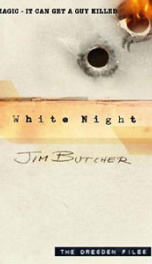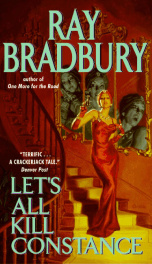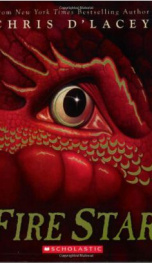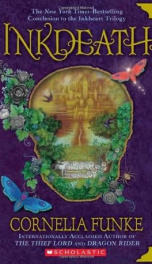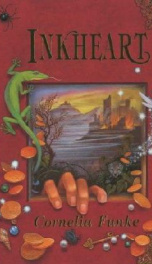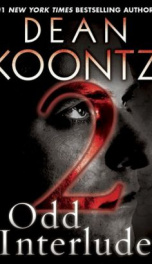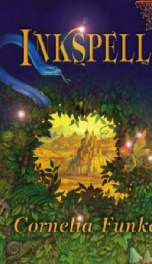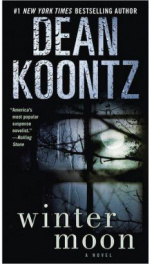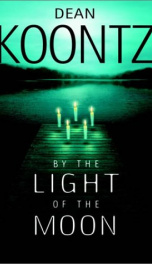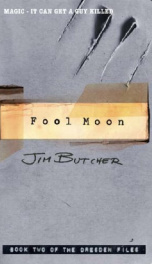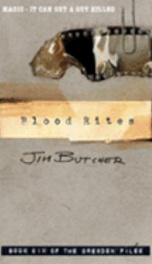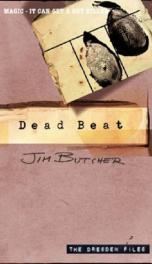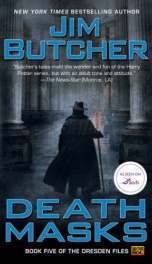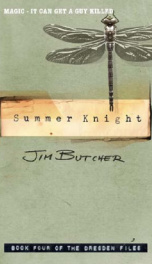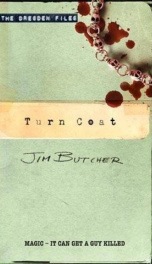Norton Andre

Andre Alice Norton, née Alice Mary Norton (b. February 17, 1912 in Cleveland, Ohio – d. March 17, 2005) was an American science fiction and fantasy author (with some works of historical fiction and contemporary fiction) under the noms de plume Andre Norton, Andrew North and Allen Weston. Norton published her first novel in 1934, and was the first woman to receive the Gandalf Grand Master Award from the World Science Fiction Society in 1977, and won the Damon Knight Memorial Grand Master Award from the SFWA in 1983. (Alan E. Nourse, assumed by some to be one of her noms de plume, was, in fact, another author of science fiction.) Alice Mary Norton was born in February 17, 1912 at Cleveland, Ohio. Her parents were Adalbert Freely Norton, who owned a rug company, and Bertha Stemm Norton. She began writing at Collingwood High School in Cleveland, under the tutelage of Miss Sylvia Cochrane. She was the editor of a literary page in the school's paper called The Collingwood Spotlight for which she wrote short stories. During this time, she wrote her first book—Ralestone Luck, which was eventually published as her second novel in 1938, the first being The Prince Commands in 1934. After graduating from high school in 1930, Norton planned to become a teacher and began studying at Flora Stone Mather College of Western Reserve University. However, in 1932 she had to leave because of the Depression and began working for the Cleveland Library System,[1] where she remained for 18 years, latterly in the children's section of the Nottingham Branch Library in Cleveland. In 1934, she legally changed her name to Andre Alice Norton, a pen name she had adopted to increase her marketability, since boys were the main audience for fantasy.[1] From 1940 to 1941, she worked as a special librarian in the cataloguing department of the Library of Congress, involved in a project related to alien citizenship. The project was abruptly terminated upon the American entry into World War II. In 1941, she bought a bookstore called the Mystery House in Mount Rainier, Maryland. The business failed and she returned to the Cleveland Public Library until 1950. Then she began working as a reader for Martin Greenberg at the Gnome Press company, where she remained until 1958, after which she became a full-time professional author. [2]Note that Martin Greenberg is not the science fiction author Martin H. Greenberg She was a member of the Swordsmen and Sorcerers' Guild of America (SAGA), a loose-knit group of Heroic Fantasy authors founded in the 1960s, some of whose works were anthologized in Lin Carter's Flashing Swords! anthologies. In later years, as Norton's health became uncertain, she was motivated to move to Florida in November 1966, and then to Murfreesboro, Tennessee. From February 21, 2005, she was under hospice care. She died peacefully at home on March 17, 2005, of congestive heart failure. Her final complete novel, Three Hands for Scorpio, was published on April 1, 2005. She was collaborating with Jean Rabe on the sequel to her 1979 novel Quag Keep, the Greyhawk novel Return to Quag Keep, when she died. Return to Quag Keep was completed by Rabe and published in 2006. On February 20, 2005, the Science Fiction and Fantasy Writers of America, which had earlier honored her with its Grand Master Award in 1983, announced the creation of the Andre Norton Award, to be given each year for an outstanding work of fantasy or science fiction for the Young adult literature market, beginning in 2006. While the Andre Norton Award is not a Nebula Award, the eligibility requirements and award procedures are the same as those for the Nebula Awards. Often called the Grande Dame of Science Fiction and Fantasy by biographers such as J.M Cornwell[3] and organizations such as Science Fiction and Fantasy Writers of America[4], Publishers Weekly[5], and Time, Andre Norton wrote novels for over 70 years. She had a profound influence on the entire genre, having over 300 published titles read by at least four generations of science fiction and fantasy readers and writers. Notable authors who cite her influence include Greg Bear, Lois McMaster Bujold, C. J. Cherryh, Cecilia Dart-Thornton[6], Tanya Huff, Mercedes Lackey, Charles de Lint, Joan D. Vinge, David Weber, and K. D. Wentworth. Norton started out writing juvenile historical fiction and adventure, and then moved into fantasy and finally science fiction. Again and again in her works, alienated outsiders undertake a journey through which they realize their full potential; this emphasis on the rite of passage continued her association in many readers' minds with young adult fiction, although she became a best seller to adults.[7] In most Norton books, whether science-fiction or fantasy, the plot takes place in the open countryside, with only short episodes in a city environment. Protagonists usually move about singly or in small groups, and in conflict situations they are more often scouts, spies or guerrillas rather than regular soldiers in large military formations.[8] As could be expected of such characters, they tend to be resourceful and capable of taking independent initiative. In some books, protagonists are introduced already in possession of such characteristics. In others the protagonists (often young) are thrust into situations where they must develop them quickly, and invariably succeed at it. Many planets in the books are Earth-like places, where humans can live without special protection, and have extensive flora and fauna which are described in considerable detail and often have substantial bearing on the plot. Airless planets and ones with unbreathable atmospheres are sometimes mentioned in passing, but are virtually never the main scene of a Norton book. In many of her books, especially her mid-period and later fantasies, such as most of the Witch World series, there are settings described similarly, with ancient stone highways left by unknown civilizations, flanked by half-fallen walls overgrown with vines, and often studded with tall pillars topped by mythical shapes. These vistas are universally presented as almost vibrating with magical power. Another common setting, in both fantasies and science fiction, is of a room filled with alien super-scientific equipment, often wherein something evil (such as experimentation on humans or other living creatures) is going on. A common theme in the books is the presence of sympathetically presented feudal and tribal cultures. In several books Native American tribes and their various analogues are given a chance to be more successful than they were in actual American history. (Norton often told friends that she was proud of her little bit of Native American ancestry.) Nonhuman creatures and cultures are usually presented sympathetically, with human protagonists sometimes supporting them against oppressive human authorities. In contrast, several books present technological and mechanized cultures as negative or even positively evil. An important role in Norton's books is often given to animals — both ordinary terrestrial ones, such as cats (with whom she had much personal experience — see List of fictional cats#Andre Norton) and exotic fictional ones, whose characteristics are meticulously worked out. Many of Norton's animals are highly intelligent without being anthropomorphic, acting as virtually full partners to the human protagonists and in many books forming telepathic links with them. Some background elements, such as the use of "Credits" as a unit of currency and of the lethal "Blasters" and the non-lethal "Stunners" as the main hand-weapons, and an interstellar hub of dubious reputation called the Dipple, are common to many of Norton's science fiction books, even when they are not set in precisely the same future. A fictional board and counter game called "Stars and Comets" appears in many Norton books. However, only fleeting hints of the rules are revealed. Counters styled as either "stars" or "comets" move across the board taking opponents' pieces. The rules of movement and capture seem to be very complex allowing hidden strategies and sudden reversals of fortune. It may be that there are both elements of skill and chance. Often, it is not the game being played itself which features, but references to it as an analogy of some plot situation. Its use helps to reinforce the alien culture being portrayed, and also gives the reader a sense of continuity between books portraying differing people and places. Star Man's Son (a.k.a. Daybreak 2250 A.D.), the story of a young man's quest through a post-apocalyptic landscape, has been retold endlessly, in print and in film, though Norton never received proper recognition for developing this theme . She also developed the concept of traveling through alternate worlds, in The Crossroads of Time, another theme which she developed . In the Time Trader series, she explored Celtic Europe, and Ice Age America, synthesizing of anthropology, archeology, and hard science fiction, and this series must also be seen as a pivotal exploration of time travel, as a method of fictionally exploring lost cultures. The second book in the Time Trader series, Galactic Derelict, features the use of recovered alien technology, to enable human travel to the stars, and this theme is also very recurrent, with definite features developed by Andre Norton. The High Hallack Library was a facility that Andre Norton was instrumental in organizing and opening. Designed as a research facility for genre writers, and scholars of “popular” literature (the genres of science fiction, fantasy, mystery, western, romance, gothic, or horror), it was located near Norton’s home in Murfreesboro, Tennessee. The facility, named after one of the continents in Norton’s Witch World series, was home to over 10,000 texts, videos and various other media. Attached to the facility were three guest rooms, allowing authors and scholars the chance to stay on-site to facilitate their research goals. The facility was opened on February 28, 1999, and operated until March 2004. Most of the collection was sold during the closing days of the facility. The declining health of Andre Norton was one of the leading causes of its closing.
do you like this author?
What readers are saying
What do you think? Write your own comment on this book!
write a commentWhat readers are saying
What do you think? Write your own comment on this author!
write a commentBook list

Ride Proud, Rebel!
Series:
Unknown
Year:
Unknown
Raiting:
2.5/5
An awesome description of the horrors and fears of the civil war written by Andre Norton. The characters of Ride Proud, Rebel! are very bright and alive. Once you start reading, it is almost impossible to stop and you just continue reading till you are done with all books of the sequel including Ride Pround,Rebel" and "Rebel Spurs".
Show more
add to favoritesadd In favorites

Rebel Spurs
Series:
Unknown
Year:
Unknown
Raiting:
4.5/5
Even the coming of an autumn dusk could not subdue the color of this land. Shadows here were not gray or black; they were violet and purple. The crumbling adobe walls were laced by strings of crimson peppers, vivid in the torch and lantern light. It had been this way for days, red and yellow, violet-colors he had hardly been aware existed back in the cool green, silver, gray-brown of Kentucky. So this was Tubacca! The rider shifted his weight in the saddle and gazed about him with watchful interest. Back in '59 this had been a flourishing town, well on its way to prominence in the Southwest. The mines in the hills behind producing wealth, the fact that it was a watering place on two cross-country routes-the one from Tucson down into Sonora of Old Mexico, the other into California-had all fed its growth. --This text refers to an alternate Hardcover edition.
Show more
add to favoritesadd In favorites
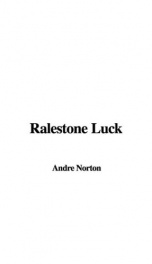
Ralestone Luck
Series:
Unknown
Year:
Unknown
Raiting:
4/5
Rupert Ralestone is a noble aristocrat having the title of the Marquess of Lorne. Unfortunately his life goes in a wrong way and he loses his money, respect and reputation. Rupert does not know what to do with his aristocratic origin and his title. He persuades his younger brother and sister to come back to the old family estate called Pirate's Haven. There they plan to find the family treasure, an amazing sword and with its help to return their reputation and money. The plot of the story will keep readers attentive and interested and will never bore them.
Show more
add to favoritesadd In favorites
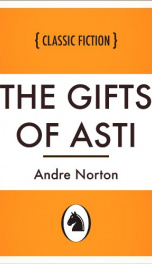
The Gifts of Asti
Series:
Unknown
Year:
Unknown
Raiting:
1.5/5
from the introductory:She was the guardian of the worlds, but HER world was dead. Even here, on the black terrace before the forgotten mountain retreat of Asti, it was possible to smell the dank stench of burning Memphir, to imagine that the dawn wind bore upward from the pillaged city the faint tortured cries of those whom the barbarians of Klem hunted to their prolonged death. Indeed it was time to leave-- Varta, last of the virgin Maidens of Asti, shivered. The scaled and wattled creature who crouched beside her thigh turned his reptilian head so that golden eyes met the aquamarine ones set slantingly at a faintly provocative angle in her smooth ivory face. "We go--?" She nodded in answer to that unvoiced question Lur had sent into her brain, and turned toward the dark cavern which was the mouth of Asti's last dwelling place. Once, more than a thousand years before when the walls of Memphir were young, Asti had lived among men below. But in the richness and softness which was trading Memphir, empire of empires, Asti found no place. So He and those who served Him had withdrawn to this mountain outcrop. And she, Varta, was the last, the very last to bow knee at Asti's shrine and raise her voice in the dawn hymn--for Lur, as were all his race, was mute. Even the loot of Memphir would not sate the shaggy headed warriors who had stormed her gates this day. The stairway to Asti's Temple was plain enough to see and there would be those to essay the steep climb hoping to find a treasure which did not exist. For Asti was an austere God, delighting in plain walls and bare altars. His last priest had lain in the grave niches these three years, there would be none to hold that gate against intruders. Varta passed between tall, uncarved pillars, Lur padding beside her, his spine mane erect, the talons on his forefeet clicking on the stone in steady rhythm. So they came into the innermost shrine of Asti and there Varta made graceful obeisance to the great cowled and robed figure which sat enthroned, its hidden eyes focused upon its own outstretched hand. And above the flattened palm of that wide hand hung suspended in space the round orange-red sun ball which was twin to the sun that lighted Erb. Around the miniature sun swung in their orbits the four worlds of the system, each obeying the laws of space, even as did the planets they represented. "Memphir has fallen," Varta's voice sounded rusty in her own ears. She had spoken so seldom during the last lonely months. "Evil has risen to overwhelm our world, even as it was prophesied in Your Revelations, O, Ruler of Worlds and Maker of Destiny. Therefore, obeying the order given of old, I would depart from this, Thy house. Suffer me now to fulfill the Law--"
Show more
add to favoritesadd In favorites

All Cats Are Gray
Series:
Unknown
Year:
Unknown
Raiting:
2/5
All Cats Are Gray is an amazing short story that was written by Andre Norton. Here readers will find an account of adventures of treasury hunters and space crafts, traveling. The characters are very bright, well-drawn, and vivid. When reading the book, you will dive into the story and feel like you are in a spaceship yourself traveling from one planet to another, meeting aliens and their civilizations. The book is definitely recommended for readers who like adventures and actions.
Show more
add to favoritesadd In favorites
What readers are saying
What do you think? Write your own comment on this author!
write a commentGenre
- Books
- Books / Detective and mystery stories
- Literature & Fiction / Classics
- Literature & Fiction / Genre Fiction
- Science Fiction & Fantasy / Authors, A-Z
- Literature & Fiction / Genre Fiction / Action & Adventure
- Literature & Fiction / Genre Fiction / Historical
- Nonfiction / Education / Education Theory / History
if you like Norton Andre try:

Larissa Ione
(Author)

Anne Bishop
(Author)

Ted Dekker
(Author)

Susan Sizemore
(Author)

Jenna Black 1
(Author)

Heather Brewer
(Author)

Lauren Kate
(Author)
readers also enjoyed
What readers are saying
What do you think? Write your own comment on this author!
write a commentGenre
- Books
- Books / Detective and mystery stories
- Literature & Fiction / Classics
- Literature & Fiction / Genre Fiction
- Science Fiction & Fantasy / Authors, A-Z
- Literature & Fiction / Genre Fiction / Action & Adventure
- Literature & Fiction / Genre Fiction / Historical
- Nonfiction / Education / Education Theory / History
if you like Norton Andre try:
readers also enjoyed
Do you want to read a book that interests you? It’s EASY!
Create an account and send a request for reading to other users on the Webpage of the book!
